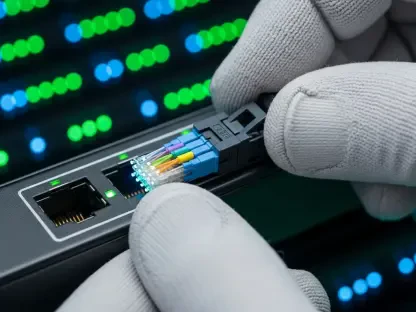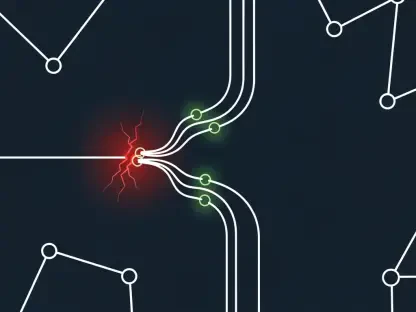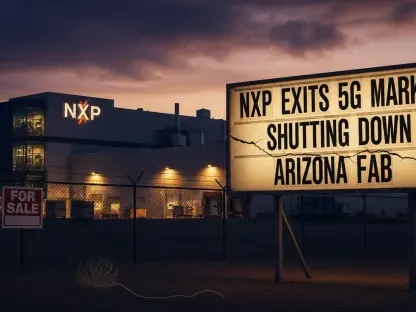In a world increasingly tethered to digital networks, a single breach can unravel national security with terrifying speed, and the reality of the Salt Typhoon hack—a devastating cyberattack that shook the nation just last year—serves as a stark reminder of this vulnerability. Picture this: foreign hackers infiltrate the core systems of major U.S. telecom giants like AT&T and Verizon, exposing sensitive data and threatening critical communications. This isn’t a hypothetical scenario—it’s what happened during that breach. Now, as the dust barely settles, the Federal Communications Commission (FCC) has made a stunning decision to roll back vital cybersecurity rules meant to prevent such disasters. This move has sparked outrage from key figures, igniting a fierce debate over the safety of America’s digital infrastructure at a time when threats loom larger than ever.
Why the FCC’s Decision Rings Alarm Bells
The significance of the FCC’s rollback cannot be overstated. These regulations, initially put in place after the Salt Typhoon incident, were designed to fortify telecom networks against unlawful access using the Communications Assistance for Law Enforcement Act (CALEA). With state-sponsored cyberattacks on the rise—reports indicate a 40% increase in such incidents targeting U.S. infrastructure since last year—the timing of this reversal raises serious concerns. The decision not only questions the federal commitment to safeguarding critical systems but also places the burden of protection on an industry that has already shown vulnerabilities to sophisticated threats.
This policy shift comes at a pivotal moment when public trust in digital security hangs by a thread. The rollback, voted through by a narrow 2-1 margin on November 20, suggests a gamble on voluntary industry efforts over enforceable mandates. As foreign adversaries continue to probe weaknesses in telecom networks, the absence of strict oversight could leave millions of Americans exposed to risks ranging from data theft to disrupted emergency services. The stakes are nothing short of monumental, demanding a closer look at how this unfolded.
The Road from Salt Typhoon to Regulatory Reversal
The roots of this controversy trace back to October of last year, when the Salt Typhoon hack—attributed to Chinese state-sponsored actors—compromised the networks of leading U.S. telecom providers. Described as the most severe telecom breach in national history, it exposed critical flaws in existing security protocols. In response, the FCC, under then-Chairwoman Jessica Rosenworcel, enforced stringent cybersecurity requirements in January, aiming to lock down networks against unauthorized interception and ensure accountability among providers.
Fast forward to this year, and the landscape has shifted dramatically under Chairman Brendan Carr. The FCC’s recent vote to rescind those mandates marks a sharp pivot toward industry self-regulation, with Carr arguing that the original rules overstepped legal bounds and lacked adequate public input. Despite lingering fears of foreign interference—evidenced by ongoing investigations into the full extent of the Salt Typhoon damage—this reversal prioritizes flexibility over firm control, leaving many to wonder if voluntary measures can truly counter the relentless pace of cyber threats.
Regulation or Collaboration: Where Does the Answer Lie?
At the heart of this issue lies a fundamental clash over how to secure America’s telecom infrastructure. Chairman Carr champions a collaborative approach, asserting that telecom companies are already taking significant voluntary steps to bolster security. His reconsideration order emphasizes “agile strategies” with industry partners, pointing to existing federal-private partnerships as evidence that heavy-handed regulation may be unnecessary. Yet, this stance overlooks a grim reality: the Salt Typhoon breach revealed that even major providers struggled to repel state-backed hackers without federal mandates.
Critics argue that voluntary efforts, while commendable, lack the teeth needed to combat sophisticated threats. Cybersecurity experts note that breaches of this magnitude often involve access to sensitive customer data and wiretapping capabilities—risks that demand guaranteed accountability rather than hopeful cooperation. The divide between Carr’s preference for industry-led solutions and the push for enforceable oversight reflects a broader tension in policymaking: balancing innovation with the urgent need to protect national interests against unseen digital enemies.
Fierce Pushback from Gomez and Cantwell
Leading the charge against the rollback are FCC Commissioner Anna Gomez and Senator Maria Cantwell (D-WA), whose sharp criticisms have amplified the controversy. Gomez, casting the sole dissenting vote in the FCC’s decision, labeled the move a “gift to the CCP,” warning that it fails to deliver any concrete cybersecurity plan nearly a year into the current leadership’s tenure. Her frustration centers on the lack of actionable safeguards, arguing that Americans are left less protected at a time when threats are escalating.
Senator Cantwell, in a blistering letter to Carr, accused the FCC of caving to industry lobbying and displaying a troubling “pattern of weakness” on national security issues. She demanded hard evidence from telecom giants like AT&T and Verizon to confirm that hackers have been fully expelled from their systems, highlighting a glaring gap in transparency. Cantwell’s pointed critique, paired with her call for Carr to testify before the Senate, underscores a growing impatience with policies that seem to prioritize corporate interests over the safety of critical infrastructure.
Charting a Path Forward for Telecom Security
With the FCC stepping back from mandatory rules, the question remains: how can telecom networks be secured amid this policy vacuum? One immediate step lies in transparency—telecom providers must be required to publicly disclose detailed cybersecurity assessments and recovery efforts post-breach, as Cantwell has insisted. Such openness could rebuild public confidence and ensure that vulnerabilities are addressed rather than hidden.
Another potential solution involves a hybrid model, where the FCC could blend voluntary collaboration with baseline mandatory standards to tackle urgent risks without hampering innovation. This approach would set clear expectations for security while allowing flexibility in implementation. Additionally, congressional action could provide a stronger framework, with legislation that enforces accountability and ensures national security isn’t left to chance. These strategies, tailored to the dynamic nature of cyber threats, offer a starting point to fortify networks against future attacks.
Reflecting on a Critical Turning Point
Looking back, the clash over the FCC’s rollback of cybersecurity rules marked a defining moment in the ongoing struggle to protect America’s digital backbone. The fierce opposition from Commissioner Gomez and Senator Cantwell highlighted a deep concern that resonated with many: the risk of leaving critical infrastructure vulnerable in the face of proven threats like the Salt Typhoon hack. Their stand underscored the urgency of prioritizing security over convenience.
Moving forward, the debate spurred a renewed focus on actionable solutions. Stakeholders across government and industry began exploring ways to bridge the gap between regulation and collaboration, with proposals for transparency and hybrid frameworks gaining traction. As cyber risks continued to evolve, the push for stronger federal oversight and legislative clarity emerged as a vital next step to ensure that the nation’s telecom networks remained a fortress, not a target, against unseen adversaries.









